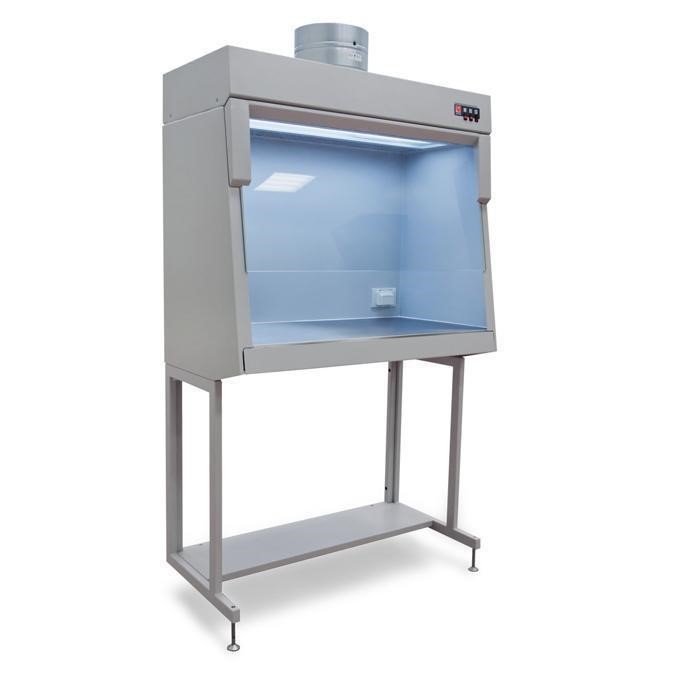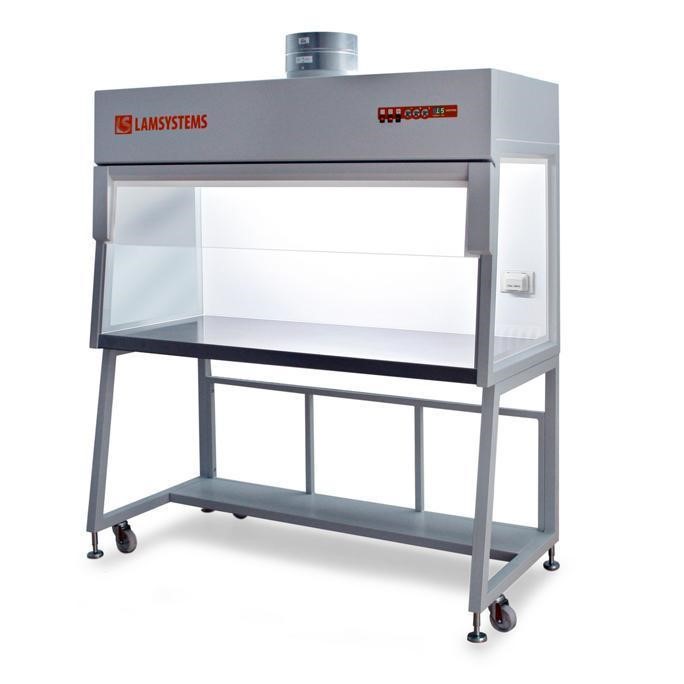It is hard to imagine a modern laboratory without a fume hood. They help to ensure the safety of the working environment and the employees. They are designed to protect users from exposure to hazardous substances, including gasses, particulates,
and aerosols. Fume hoods also help to prevent the spread of contamination and fire hazards in the lab. The first hoods of this kind were created at the start of the last century. Today, there are many variations of this laboratory
equipment on the market. They vary based on the danger levels of the contained materials, the frequency of experiments, size, and energy efficiency. Some types of laboratory fume hoods include:
 This fume cabinet will be a perfect fit for small laboratories performing chemical research. It can protect researchers from dangerous low-toxic substances produced by materials during the following procedures:
This fume cabinet will be a perfect fit for small laboratories performing chemical research. It can protect researchers from dangerous low-toxic substances produced by materials during the following procedures:
 This medium-sized fume hood with dimensions of 1315х621х1920 mm is the perfect fit for pharmacological industry laboratories. It can be used for drug preparation, synthesis, and analysis in a controlled environment. Working with drug
components inside the cabinet helps to prevent exposure to toxic substances and cross-contamination between materials. Its tempered glass front window can stay open in two fixed positions. You can move containers in and out during
the research. All the hazardous substances will be kept inside the working chamber and exhausted later on.
This medium-sized fume hood with dimensions of 1315х621х1920 mm is the perfect fit for pharmacological industry laboratories. It can be used for drug preparation, synthesis, and analysis in a controlled environment. Working with drug
components inside the cabinet helps to prevent exposure to toxic substances and cross-contamination between materials. Its tempered glass front window can stay open in two fixed positions. You can move containers in and out during
the research. All the hazardous substances will be kept inside the working chamber and exhausted later on.
 The SHV-1,0-“Laminar-S” fume hood with a UV unit is popular among small biological research groups. With a size of 1020х621х1920 mm, it can fit even the smallest rooms and provide researchers with all the necessary protection. Ultraviolet
light emitted by the UV unit is used to disinfect the working chamber after contact with most contagious materials. Sometimes it is not enough to exhaust all hazardous particles from the chamber; some of them weigh so much that they
immediately settle on the inner surface of the laboratory fume hood. UV light can prevent the growth of various microorganisms and spores.
The SHV-1,0-“Laminar-S” fume hood with a UV unit is popular among small biological research groups. With a size of 1020х621х1920 mm, it can fit even the smallest rooms and provide researchers with all the necessary protection. Ultraviolet
light emitted by the UV unit is used to disinfect the working chamber after contact with most contagious materials. Sometimes it is not enough to exhaust all hazardous particles from the chamber; some of them weigh so much that they
immediately settle on the inner surface of the laboratory fume hood. UV light can prevent the growth of various microorganisms and spores.
 Serious medical research with dangerous bacteria and viruses requires large fume hoods with UV units. This device has the following dimensions:
Serious medical research with dangerous bacteria and viruses requires large fume hoods with UV units. This device has the following dimensions:
- Ducted Fume Hoods;
- Ductless Fume Hoods;
- Biosafety Cabinets (BSC);
- Radioisotope Hoods;
- Perchloric Acid Hoods;
- Walk-In Fume Hoods;
- Variable Air Volume (VAV) Fume Hoods.
FUME HOOD SHV-1,0-“Laminar-S.”
 This fume cabinet will be a perfect fit for small laboratories performing chemical research. It can protect researchers from dangerous low-toxic substances produced by materials during the following procedures:
This fume cabinet will be a perfect fit for small laboratories performing chemical research. It can protect researchers from dangerous low-toxic substances produced by materials during the following procedures:
- Mixing;
- Heating;
- Distilling;
- Evaporating;
- Reacting with other chemicals.
FUME HOOD SHV-1,3-“Laminar-S.”
 This medium-sized fume hood with dimensions of 1315х621х1920 mm is the perfect fit for pharmacological industry laboratories. It can be used for drug preparation, synthesis, and analysis in a controlled environment. Working with drug
components inside the cabinet helps to prevent exposure to toxic substances and cross-contamination between materials. Its tempered glass front window can stay open in two fixed positions. You can move containers in and out during
the research. All the hazardous substances will be kept inside the working chamber and exhausted later on.
This medium-sized fume hood with dimensions of 1315х621х1920 mm is the perfect fit for pharmacological industry laboratories. It can be used for drug preparation, synthesis, and analysis in a controlled environment. Working with drug
components inside the cabinet helps to prevent exposure to toxic substances and cross-contamination between materials. Its tempered glass front window can stay open in two fixed positions. You can move containers in and out during
the research. All the hazardous substances will be kept inside the working chamber and exhausted later on.
FUME HOOD SHV-1,5-“Laminar-S.”
The SHV-1,5-“Laminar-S” is a slightly larger hood that is more fitting for cosmetic industry laboratories. It will protect workers from harmful substances involved in the production, testing, and analysis of cosmetic products. Some of the substances that may pose respiratory hazards in the cosmetic industry are:- Volatile organic compounds;
- Dust and powders;
FUME HOOD SHV-1,0-“Laminar-S.” with a UV Unit
 The SHV-1,0-“Laminar-S” fume hood with a UV unit is popular among small biological research groups. With a size of 1020х621х1920 mm, it can fit even the smallest rooms and provide researchers with all the necessary protection. Ultraviolet
light emitted by the UV unit is used to disinfect the working chamber after contact with most contagious materials. Sometimes it is not enough to exhaust all hazardous particles from the chamber; some of them weigh so much that they
immediately settle on the inner surface of the laboratory fume hood. UV light can prevent the growth of various microorganisms and spores.
The SHV-1,0-“Laminar-S” fume hood with a UV unit is popular among small biological research groups. With a size of 1020х621х1920 mm, it can fit even the smallest rooms and provide researchers with all the necessary protection. Ultraviolet
light emitted by the UV unit is used to disinfect the working chamber after contact with most contagious materials. Sometimes it is not enough to exhaust all hazardous particles from the chamber; some of them weigh so much that they
immediately settle on the inner surface of the laboratory fume hood. UV light can prevent the growth of various microorganisms and spores.
FUME HOOD SHV-1,5-“Laminar-S.” with a UV Unit
 Serious medical research with dangerous bacteria and viruses requires large fume hoods with UV units. This device has the following dimensions:
Serious medical research with dangerous bacteria and viruses requires large fume hoods with UV units. This device has the following dimensions:
- Width —1,500;
- Depth — 770;
- Height — 1,880.
